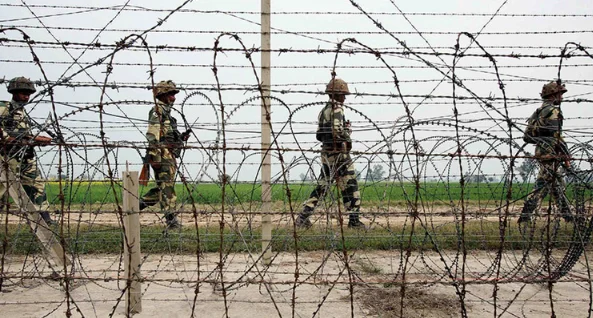Decision to recommit to 2003 ceasefire opens possibilities that must be carefully built upon, not lost, by both countries.
India and Pakistan’s joint re-commitment to the 2003 ceasefire, through an agreement to “strictly observe” the truce along the Line of Control and all other sectors “in the interest of achieving mutually beneficial and sustainable peace along the borders”, is a significant moment. The 2003 truce had all but evaporated, with 2020 seeing over 5,000 violations by Pakistan, and several deaths of civilians. Indian retaliation resulted in deaths across the line too. The freeze in relations — the two sides have had little substantive contact since the 2008 Mumbai terrorist attacks, and efforts by the Modi government to restart dialogue with the Pakistani leadership were also skippered by the attack at the Pathankot air base — played its part in heating up the LoC.
The agreement may be a military-to-military decision to cut losses on both sides. But it is also hard to imagine that the militaries, especially on the Indian side, could have signed off on this agreement without political direction. After India revoked the special status of Jammu & Kashmir, and bifurcated it into two Union Territories in August 2019, Pakistan reiterated that its pre-condition for a dialogue was a roll back of the decisions on Kashmir. It is unclear if the agreement to adhere to the ceasefire means that Pakistan has revised its stand. But at the very least, it may contribute to an improvement of the security situation on the ground in Kashmir. Delhi has often alleged that many of the ceasefire violations were aimed at providing cover to infiltrating militants. Infiltration attempts may now drop, and go some way in meeting a key Indian demand on cross-border terrorism.
To buy our online courses Click Here
The agreement comes at a crucial time for both India and Pakistan. The new Biden Administration in Washington has also taken ownership of the de-escalation, saying its officials had been asking that India and Pakistan cool off at the LoC. Certainly, it gives Pakistan a breather on its eastern front at a time when it is keen to be seen as making sincere efforts to help the US arrive at a positive outcome in Afghanistan. For India, despite the disengagement with the Chinese Army at two friction points in eastern Ladakh, the resolution of other issues remains a work in progress, as evidenced by the conversation between External Affairs Minister S Jaishankar and his Chinese counterpart Wang Yi. Now, the de-escalation at the LoC sends out a larger signal: That rather than tailor its own responses to the much predicted two-front war, Delhi would like to de-couple its ties with Pakistan and China, dealing with each separately.
Read Also: SATSFY THE HIDDEN HUNGER FOR FOOD SECURITY
If the new resolve on the ceasefire holds, several low hanging fruit are available to further improve the atmosphere between the two countries, including the restoration of full strength diplomatic missions on both sides. But India and Pakistan have been on the cusp of a new dawn several times in the past only for the moment to slide into darkness. Indian security agencies, in Kashmir and elsewhere in the country, must be on their highest guard against spoiler attempts.




